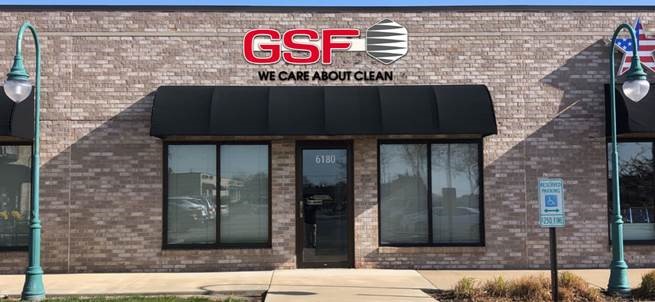According to the Environmental Protection Agency (EPA), indoor air quality (IAQ) can often be two to five times worse than outdoor air quality. Indoor air pollution is problematic because it can have short-term and long-term effects on building occupants. Short term effects can include eye and nose irritation, headaches and fatigue, while long-term effects related to chronic exposure can range from respiratory illnesses to heart disease or even cancer.
Numerous types of indoor air pollutants make it difficult for facility managers to maintain good IAQ. These pollutants are often classified into three categories:
- Biological pollutants: These pollutants often irritate allergy sufferers, and even those without allergies. They include mold, tree and flower pollen, pet dander and dust mites.
- Chemical pollutants: Volatile organic compounds (VOCs) like acetone, ethanol and butanal are formed from carbon and other elements. These compounds vaporize at room temperature and are found in many household and commercial items. Other examples of chemical pollutants include lead and radon.
- Combustion pollutants: These include carbon monoxide, a potentially deadly odorless, colorless and tasteless gas, and smoke from tobacco products.
A more sustainable approach to cleaning combined with tried-and-true tips can help facility managers overcome concerns about IAQ.
Successful Strategies for Improving IAQ
Many types of facilities have indoor air concerns, from hotels in warmer climates to restaurants with kitchen exhaust systems and schools welcoming children with asthma and allergies. It’s important to have a plan for improving IAQ levels over time.
Consider the following best practices for achieving and maintaining better indoor air quality:
Conduct indoor air quality testing.
Before taking steps to improve IAQ, it helps to know a facility’s current levels. This will provide a baseline and enable facility managers to track progress over time. Indoor air quality monitors (i.e., meters that detect IAQ) help managers determine current levels in comparison to indoor air quality standards and set goals for improvement.
Go green with your cleaning.
While a commitment to cleaning and disinfecting is essential, it’s also important for facility managers to take a close look at the types of chemicals being used and the overall impact of their cleaning program. Building service contractors (BSCs) should always use high-quality cleaning solutions that won’t add VOCs to the air. Fragrance-free and dye-free products are often preferred because they can avoid aggravating those with allergy sensitivities.
Some BSCs have even opted to use electrochemically activated solutions (ECAS) that are made from water, salt and electricity. These solutions are sustainable, much safer compared to traditional chemicals, and do not have any harmful additives. In addition to ECAS, there are many other green strategies that BSCs rely on to improve occupant health and safety, and minimize environmental concerns.
Follow a regular cleaning schedule.
Cleaning removes particles in indoor air, and those that have settled on or within surfaces. Regularly vacuuming with HEPA filtered vacuums can help remove allergens like dander, pollen and dust mites from carpet fibers and other types of flooring. Cleaning surfaces also removes dust and improves the look of a facility. Meanwhile, disinfecting kills bacteria that can become airborne. For every cleaning task, opting for sustainable chemicals, tools and equipment is preferred. They not only reduce risks to cleaning professionals and building occupants, but they also help facilities limit water, energy and waste. Some green cleaning solutions are certified by reputable organizations like Green Seal or the Carpet and Rug Institute, which vouch for the effectiveness and safety of the product or service.
Conduct maintenance on indoor systems.
Regularly maintain ventilation systems and replace carbon monoxide detector batteries as needed. Air conditioning and dehumidifier systems are key to removing excess moisture from the air and eliminating warm and humid conditions that encourage dust mites and mold. Over time, air conditioning coils, pans and filters can become dirty, which negatively impacts the performance and energy usage. Improve air flow and extend the life of assets by following a regular cleaning schedule for equipment. Efficient air systems also reduce the risk that occupants will open windows, which can let in outdoor pollutants.
Be aware of poor IAQ causes and signs.
There are a range of symptoms and signs related to poor IAQ. If building occupants seem especially lethargic or frequently feel under the weather, it may be time to course correct the IAQ strategy to alleviate irritations. Cleaning staff and maintenance personnel should also know how to identify pollutants like mold and mildew. If a facility is smoke-free or pet-free, employees may need to reinforce these rules if they are broken to help maintain good IAQ.
Sustainability Supports Cleaner Indoor Air
Because poor indoor air quality can have an immense impact on the wellbeing of building occupants, it is important for facility managers to prioritize maintaining good IAQ. Regular cleaning and disinfecting can help remove and control indoor air pollutants while limiting the risk of health-related triggers. A sustainable approach is always preferred, as it tackles biological pollutants and keeps some chemical pollutants from being added to indoor air. With a green cleaning program in place, and compliance with the other best practices above, facility managers and BSCs can improve IAQ and ensure that every visitor has an exceptional experience in their buildings.
Achieve cleaner environments with the help of GSF-USA. For more information, contact the GSF office nearest you. Follow us on LinkedIn and Facebook for the latest updates.


